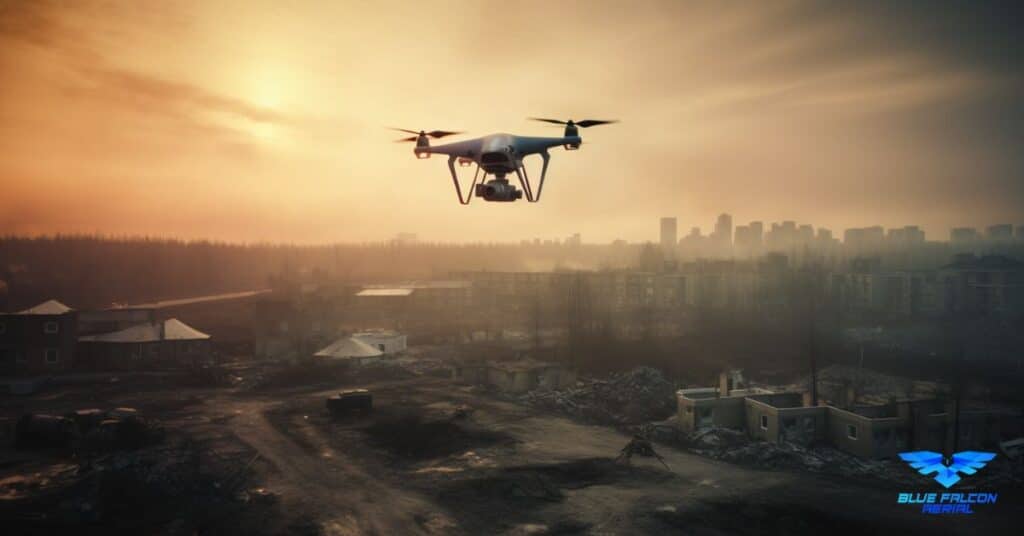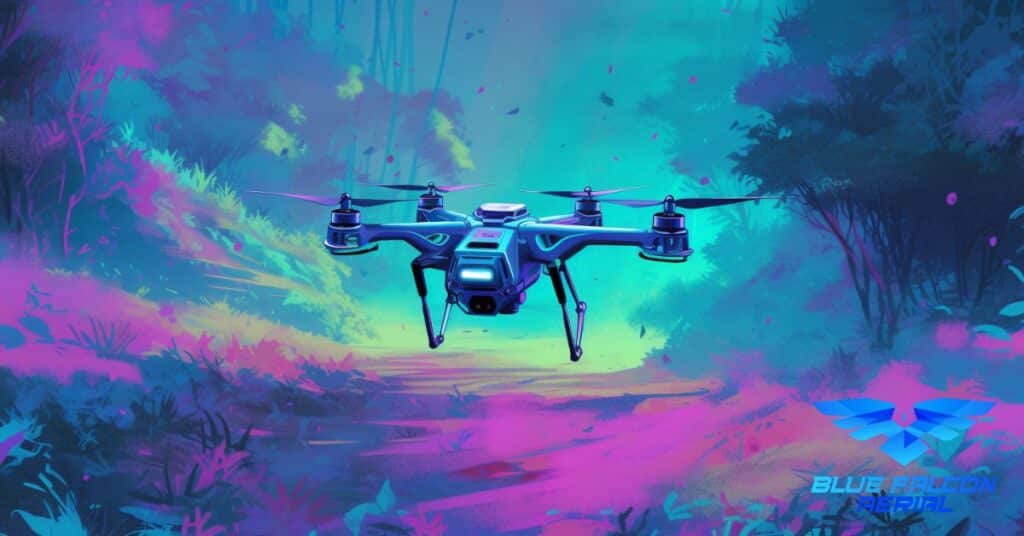In an era where every second counts in saving lives, drones have emerged as critical allies in emergency response operations. Drone Aided Emergency Response is not just a technological advancement; it’s a paradigm shift in how we approach urgent situations. From locating stranded individuals in natural disasters to delivering essential medical supplies, drones are increasingly becoming the heroes of emergency operations. This article delves into how these unmanned aerial vehicles are making emergency response faster, safer, and more efficient than ever before.
Key Takeaways
- Drone Aided Emergency Response is revolutionizing how emergencies are managed, offering rapid response, improved situational awareness, and accessibility to unreachable areas.
- Flood Disaster Management: Drones provide critical insights in flood situations, aiding in evacuation strategies and rescue route planning.
- Earthquake Response: In the aftermath of earthquakes, drones are vital in identifying inaccessible routes and collapsed structures, thus directing rescue efforts efficiently.
- Search and Rescue: Drones equipped with thermal imaging enhance the effectiveness of search and rescue operations, especially in challenging terrains and scenarios.
- Disaster Recovery: Post-disaster, drones aid in safely inspecting damaged infrastructure, enabling quicker and safer repair work.
- Regulatory Challenges: While drones offer numerous advantages, regulatory and logistical challenges remain in urban environments and require continuous development.
- Medical Emergency Applications: Drones are expanding their role in medical emergencies, from delivering medical supplies to potentially transporting medical personnel.
- Future Advancements: Expected advancements in drone technology include enhanced autonomy, improved payload capacity, and better integration with AI, broadening the scope of their application in emergency response.
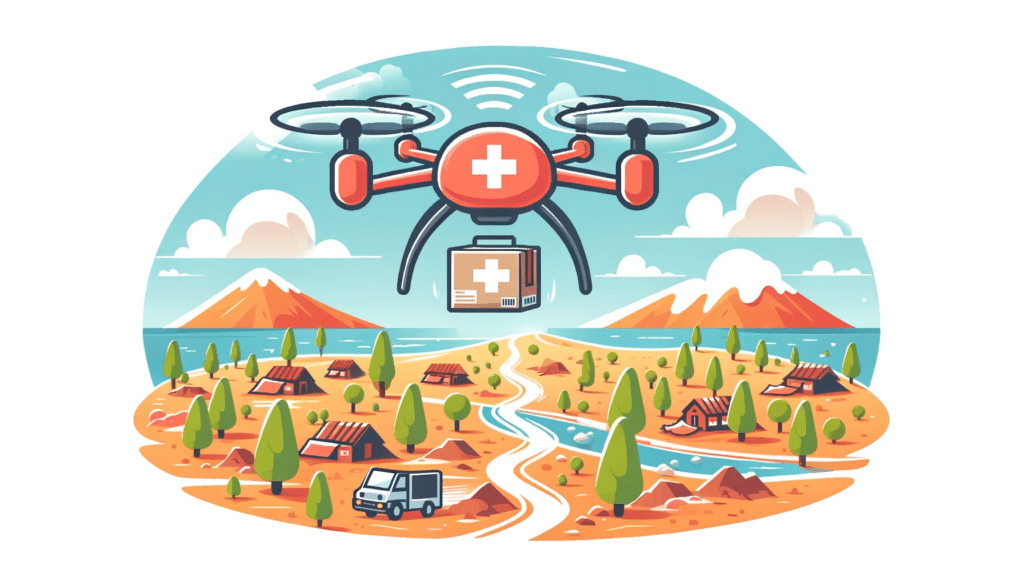
The Evolution of Emergency Response
Emergency response has undergone significant changes over the years, evolving from traditional methods to incorporate advanced technology.
Historical Perspective on Emergency Response
- Early Methods: Initially, emergency response relied heavily on manual efforts and basic communication tools.
- Technological Integration: Over time, the introduction of advanced technology like GPS and mobile communications enhanced response capabilities.
Introduction of Drones into Emergency Services
- Initial Adoption: Drones were first recognized for their potential in emergency scenarios in the early 21st century.
- Progressive Integration: Their ability to provide aerial views, deliver supplies, and gather data quickly made them a valuable asset in emergency response operations.
How Drones Are Revolutionizing Emergency Response
Drones have brought a paradigm shift in how emergencies are managed, offering speed, efficiency, and safety in operations.
Benefits of Using Drones for Rapid Response and Assessment
- Quick Deployment: Drones can be deployed rapidly and reach affected areas much faster than ground vehicles in many cases.
- Real-Time Data Collection: They provide real-time, high-quality aerial imagery essential for assessing situations and planning responses.
Application in Various Emergency Scenarios
- Natural Disasters: Used for assessing damage, locating survivors, and mapping safe routes for rescue operations.
- Medical Emergencies: Delivering critical medical supplies like blood, vaccines, or antivenoms in hard-to-reach areas.
- Search and Rescue Operations: Scanning vast areas quickly to locate missing persons.
| Emergency Scenario | Drone Application | Impact |
|---|---|---|
| Natural Disasters | Damage assessment, survivor location | Faster, safer assessment and response |
| Medical Emergencies | Rapid delivery of supplies | Life-saving interventions in critical times |
| Search and Rescue | Quick, wide-area scanning | Increased chances of locating missing persons |
Drones’ ability to provide immediate aerial insights and deliver essential supplies makes them a game-changer in emergency response, significantly enhancing the speed and effectiveness of life-saving operations.
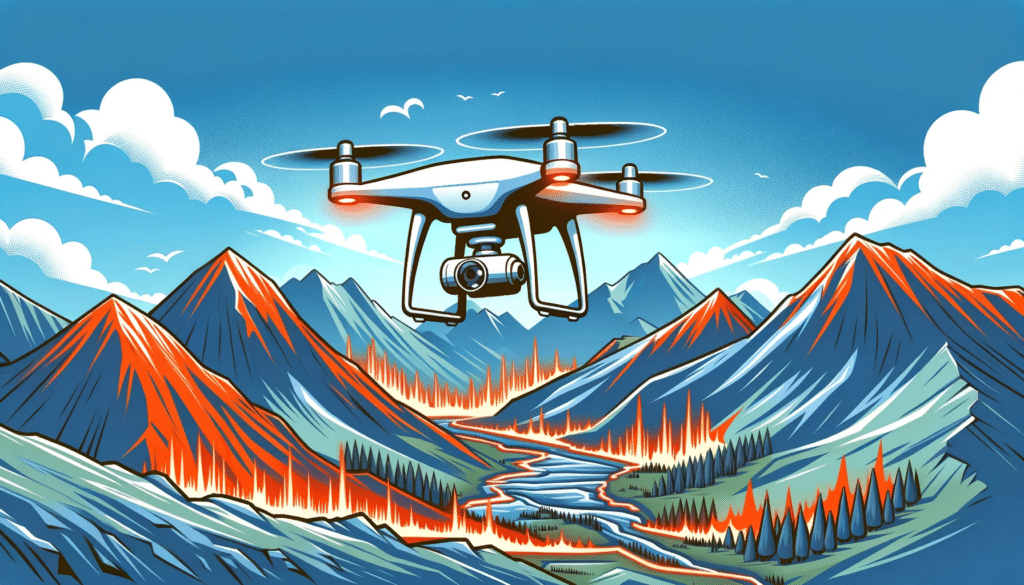
Case Studies: Drones in Action
Drones have demonstrated significant versatility and efficiency in various emergency scenarios, from natural disasters to medical emergencies.
Use of Drones in Flood Disasters
In flood management, drones have been instrumental in assessing flood directions and identifying at-risk buildings, aiding evacuation strategies and rescue route planning. One notable instance was during the Toddbrook Reservoir incident in Derbyshire, UK, in 2019, where drones played a crucial role in monitoring the reservoir wall and guiding the response.
Earthquake Response
The 2008 Sichuan earthquake in China showcased drones’ indispensability in post-disaster scenarios. Drones identified collapsed buildings and blocked routes, directing rescue teams to priority areas effectively.
Search and Rescue Missions
Drones, especially those equipped with thermal imaging cameras, have significantly enhanced search and rescue operations. They provide accurate and safe methods for locating survivors in challenging terrains and scenarios, such as earthquakes and floods.
Drones for Disaster Recovery
In disaster recovery, drones aid in safely inspecting infrastructure, as seen in the Toddbrook Reservoir incident. They ensure quicker and safer repair work, reducing the need for human presence in unstable environments.
Situational Awareness
Drones enhance situational awareness in various emergencies, from assessing disaster impacts to managing traffic flow. This real-time aerial imagery is crucial for understanding an emergency’s scale and aiding in resource allocation and reconstruction efforts.
Challenges and Considerations in Drone Deployment
Despite the advantages, drone deployment in emergency scenarios comes with challenges and necessary considerations.
Regulatory and Logistical Hurdles
Projects like the IDEAL DRONE have shown the potential of drones in emergency situations, such as firefighting. However, challenges such as accuracy, battery life, and the requirement for individuals to wear trackers are ongoing issues to address.
Expanding Medical Emergency Applications
In the medical field, projects like SAFIR-Med are working on integrating drones for emergency medical services. This includes coordinating drone flights using AI and navigating within virtual representations of the real world for tasks like transporting medical equipment and tissue samples.
Disaster Management and Relief
Drones have been critical in disaster management, as evidenced in events like the 2015 Nepal earthquake. They offer rapid deployment and assessment capabilities, which are crucial when traditional transportation routes are inaccessible. In natural disaster scenarios, drones assist in search and rescue, insurance inspections, and pre- and post-disaster 3D mapping, as demonstrated in the South African floods in 2022.
These case studies underscore the transformative role of drones in emergency response, highlighting their potential to offer rapid, efficient, and safer solutions in critical situations.
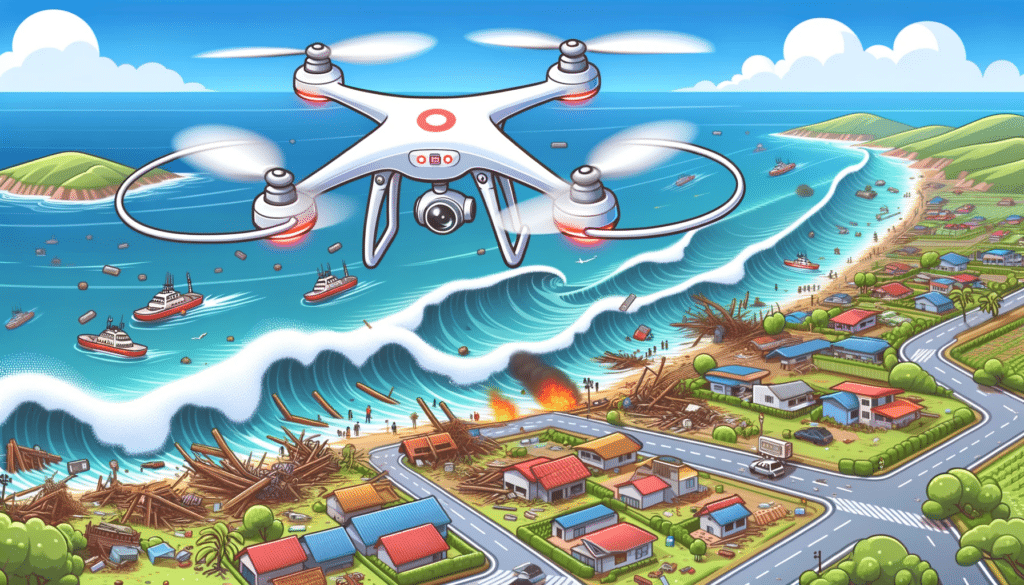
Future of Drone Aided Emergency Response
As drone technology continues to evolve, its role in emergency response is expected to expand significantly, offering new capabilities and applications.
Predictions and Upcoming Advancements
- Enhanced Autonomy: Future drones will likely have more advanced autonomous capabilities, allowing for more efficient and coordinated emergency responses without constant human oversight.
- Improved Payload Capacity: Increased payload capacities will enable drones to carry more substantial medical supplies, communication equipment, and even rescue gear.
- Better Integration with AI: Integration with artificial intelligence will enhance decision-making capabilities in complex emergency scenarios, improving response strategies.
Potential New Applications
- Disaster Prediction and Prevention: Drones equipped with advanced sensors could be used to monitor environmental conditions and predict natural disasters before they occur.
- Advanced Medical Response: Drones may soon be able to carry more advanced medical equipment, potentially even transporting medical personnel to inaccessible areas quickly.
- Enhanced Communication Networks: In disaster-hit areas, drones could establish temporary communication networks to facilitate rescue operations and maintain contact in areas where traditional communication infrastructures are down.
The future of drone-aided emergency response is bright, with advancements poised to significantly enhance the speed, efficiency, and reach of life-saving operations.
By offering rapid response, detailed situational awareness, and access to otherwise unreachable areas, drones have proven to be invaluable assets in critical times. To delve deeper into the transformative impact of drones and explore how they are reshaping various industries, visit our comprehensive guide at Soaring High: A Comprehensive Guide to Building and Growing Your Drone Business. For those seeking expert drone services or interested in implementing drone solutions in their operations, feel free to reach out to us at Blue Falcon Aerial. Join us in embracing the future of emergency response, where drones play a pivotal role in saving lives faster and more efficiently.

